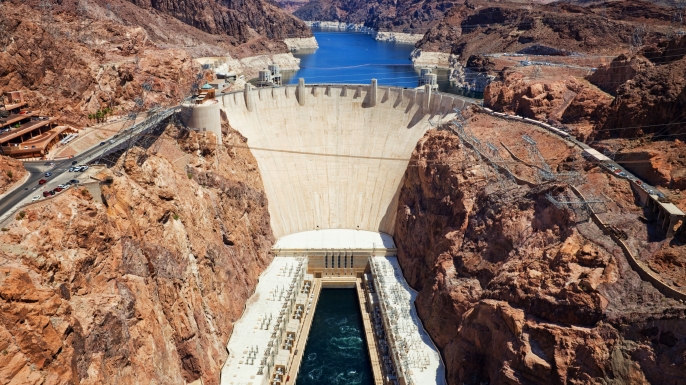

On this day in labor history, the year was 1936.
That was the day Hoover Dam was formally turned over to the federal government.
It was a massive undertaking.
Approved by the Coolidge Administration in 1928, work began to divert and then dam the Colorado River in 1931, creating Lake Mead.
Thousands of unemployed flocked to the area in search of jobs.
More than 21,000 were employed over the course of 5 years, with as many as 5200 working on any given day.
Workers were paid an average of 50 cents an hour with higher pay for skilled work.
Governmental hiring terms included preference to veterans and no hiring of Asians.
The Colored Citizens Labor and Protective Association of Las Vegas protested de facto hiring discrimination against blacks.
Their eventual representation among the employed totaled and estimated 24 to 30 for the duration of the project.
A few Native Americans were hired as high scalers to remove loose rock with jackhammers and dynamite.
Estimated fatalities ranged from 96 to over 150.
Many died from falls, heat-related illnesses, falling debris, heavy equipment and carbon monoxide poisoning from tunnel work.
The project was rocked by at least two documented strikes.
The Industrial Workers of the World attempted to organize there. Workers struck over wage cuts and working conditions.
They repeatedly demanded flushing toilets and cold, clean running water, especially in temperatures as high as 120 degrees in the summertime.
At the time Hoover Dam was turned over to the government, it was the tallest dam and the largest hydroelectric station.
It currently generates about 4 billion-kilowatt hours of hydroelectric power for Nevada, Arizona and California.
More Episodes
All Episodes>>You may also like
Create Your Podcast In Minutes
- Full-featured podcast site
- Unlimited storage and bandwidth
- Comprehensive podcast stats
- Distribute to Apple Podcasts, Spotify, and more
- Make money with your podcast











